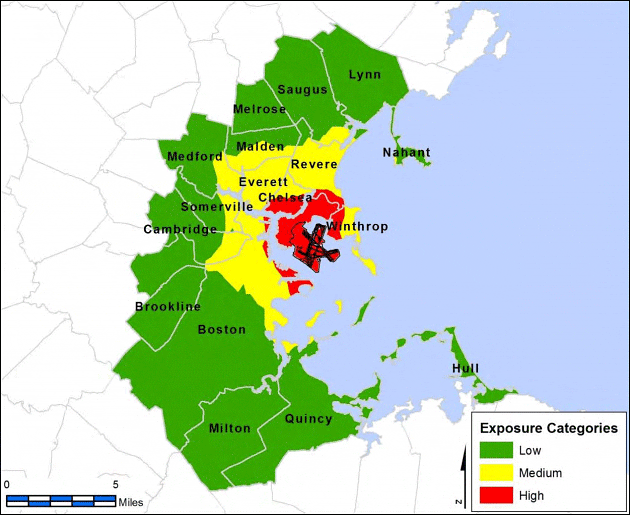Advertisement
Live Near Logan? You May Face Higher Risk Of Asthma, Pulmonary Disease
The AP reports the not-so-great results of a new study on the health of residents who live near Logan International Airport. The bottom line is that respiratory problems that look a lot like asthma appear to be more prevalent among children who live in this "high exposure" area compared to those living further from the airport. For adults, the likelihood of developing chronic obstructive pulmonary disease was higher among those living in close proximity to the airport.
Produced by the state Department of Public Health, the report focused on 17 communities within a five-mile radius of Logan: Boston, Brookline, Cambridge, Chelsea, Everett, Hull, Lynn, Malden, Medford, Melrose, Milton, Nahant, Quincy, Revere, Saugus, Somerville and Winthrop.

From the report:
•Among children, study results identified some respiratory effects indicative of
undiagnosed asthma (i.e., probable asthma); children in the high exposure area
were estimated to have three to four times the likelihood of this respiratory
outcome compared with children in the low exposure area.•Among adult residents, individuals diagnosed with chronic obstructive pulmonary
disease (COPD) were statistically significantly more likely to have lived in the high
exposure area for three or more years.•There were no statistically significant differences in cardiovascular outcomes in the
study population across the high, medium, and low exposure areas.•There were no statistically significant differences with respect to hearing loss in
either adults or children for those living in the high exposure area compared to the
lowest exposure area.
Here's more from the AP:
The state Department of Public Health said in a report...that chronic obstructive pulmonary disease was statistically significantly higher for adult residents who had lived near the airport for three or more years.
The study also found that children living near the airport were three to four times more likely to report asthma-related symptoms.
The study was based on interviews with more than 6,000 adults and more than 2,000 children in 17 communities within five miles of the airport.
The Massachusetts Port Authority, which runs the airport, has taken several measures over the past several years to reduce air pollution from airport property.
